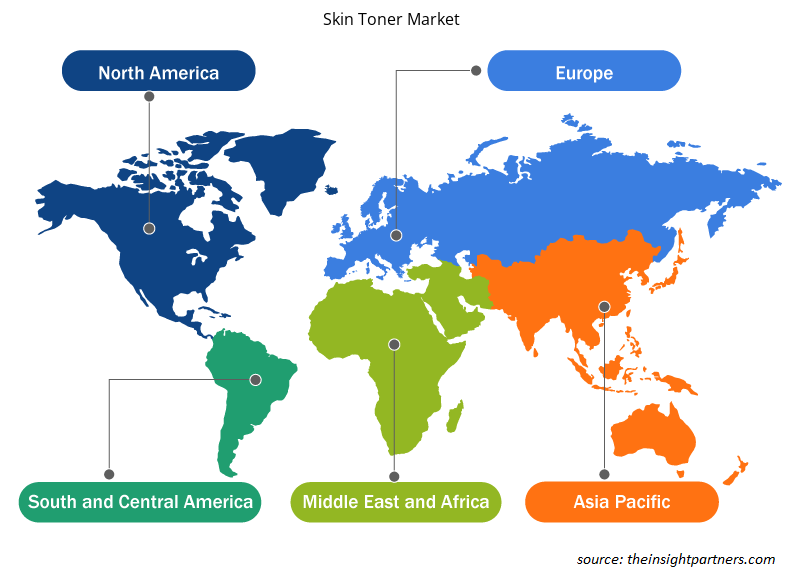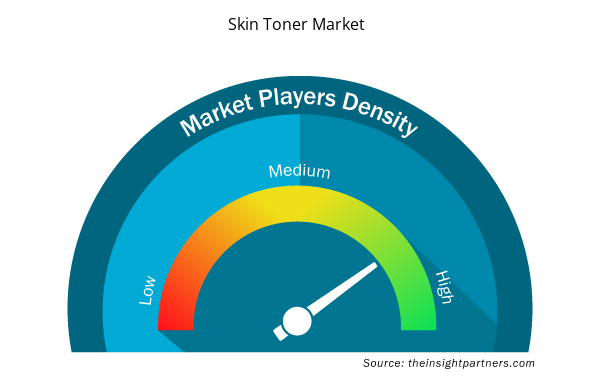[研究报告] 爽肤水市场预计将从 2022 年的 11.808 亿美元增长到 2028 年的 15.9675 亿美元。预计 2022 年至 2028 年的复合年增长率为 5.2%。
市场分析
爽肤水是用于清洁、保湿和缩小毛孔的化妆品。主要市场参与者提供各种爽肤水,例如保湿爽肤水、去角质爽肤水和护理爽肤水。保湿爽肤水质地轻盈、pH 值均衡且不干燥,有助于恢复皮肤保护屏障,让皮肤在保湿的同时感到活力充沛。快速吸收的保湿爽肤水可软化和抚平干燥的皮肤,同时锁住水分,使皮肤焕然一新、看起来健康。保湿爽肤水含有神经酰胺、透明质酸和烟酰胺。保湿爽肤水中含有多种酸,为消费者带来额外益处,从而加速了对保湿爽肤水的需求。保湿爽肤水在冬季非常受欢迎,因为它们有益于干燥或缺水的皮肤。
增长动力与挑战
有机和天然个人护理和化妆品越来越受到消费者的欢迎,因为这些产品不含化学物质,成分透明。有机爽肤水适合皮肤,因为它们不会引起刺激、瘙痒或其他不良反应。有机爽肤水有各种成分,如芦荟、罗勒和印度楝。它们可以减少皮肤爆痘的机会,平衡皮肤的 pH 值,补充水分和调理皮肤,使皮肤更健康,并提高营养吸收能力。这有助于收紧皮肤,缩小毛孔,同时调节油脂分泌。由于这些特性,消费者对有机产品的需求正在增加。由于社交媒体的出现,消费者对有机产品好处的认识和理解不断提高,这加速了对有机个人护理产品的需求。此外,纯素、清真、无残忍、天然、有机和植物产品的日益流行,增加了草本美容产品的消费,尤其是护发和护肤产品。因此,全球许多制造商都在扩大其有机产品业务,以满足日益增长的需求。假冒产品案件的增多对爽肤水市场构成了挑战。假冒产品案件的增多严重影响了品牌的声誉和消费者的信任。由于许多顾客不知道他们购买的产品是假冒的,因此当产品无法正常工作、破损或不符合他们的期望时,他们会责怪正品公司。结果,顾客对品牌失去了信任,这可能意味着他们将来可能会避免从同一家零售商购买产品。因此,假冒产品案件的增多阻碍了爽肤水市场的增长。
定制此报告以满足您的需求
您可以免费定制任何报告,包括本报告的部分内容、国家级分析、Excel 数据包,以及为初创企业和大学提供优惠和折扣
- 获取此报告的关键市场趋势。这个免费样品将包括数据分析,从市场趋势到估计和预测。
报告分类和范围
“2028 年全球爽肤水市场分析”是一项专业而深入的研究,主要关注全球市场趋势和增长机会。该报告旨在概述全球市场,并按类型、类别、分销渠道和地域对市场进行详细细分。全球爽肤水市场近年来一直保持高增长,预计在预测期内将继续保持这一趋势。该报告提供了全球爽肤水消费量的关键统计数据以及主要地区和国家的需求。此外,该报告还对影响主要地区和国家爽肤水市场表现的各种因素进行了定性评估。该报告还包括对爽肤水市场主要参与者及其关键战略发展的全面分析。还包括对市场动态的几项分析,以帮助确定关键驱动因素、市场趋势和有利可图的机会,进而有助于确定主要收入来源。
此外,生态系统分析和波特五力分析提供了全球爽肤水市场的360度视角,有助于了解整个供应链和影响市场增长的各种因素。
节段分析
全球爽肤水市场根据类型、类别和分销渠道进行细分。根据类型,爽肤水市场细分为保湿爽肤水、去角质爽肤水和护理爽肤水。根据类别,市场分为有机和传统。爽肤水市场根据分销渠道分为超市和大卖场、药店和药房、健康和美容商店、在线零售和其他。根据类型,护理爽肤水占据了相当大的市场份额。护理爽肤水通常含有 AHA/BHA、水杨酸、乙醇酸和天然提取物等成分,有助于治疗特定的皮肤病。护理爽肤水可平衡过度油性;舒缓发红和刺激;并最大限度地减少瑕疵、黑头和毛孔粗大的出现。保湿爽肤水质地轻盈,免洗,pH 值均衡,不干燥,有助于恢复皮肤保护屏障,在保湿的同时让皮肤感觉充满活力。去角质爽肤水是化学去角质剂(如 AHA、BHA 和 PHA)的水溶液,性质温和,适合日常使用。按类别划分,传统爽肤水占据了相当大的市场份额。消费者越来越倾向于有机爽肤水,因为其大部分成分都是活性成分;然而,在合成护肤品中,活性成分仅占 5-10%。传统爽肤水通常由化学物质和成分配制而成,旨在帮助去除清洁后皮肤上残留的污垢、油脂或化妆品。
区域分析
报告详细介绍了全球爽肤水市场,涉及五个主要地区,即北美、欧洲、亚太地区 (APAC)、中东和非洲 (MEA) 以及南美和中美。亚太地区占据了相当大的市场份额,2021 年价值超过 5 亿美元。由于接触社交媒体,该地区新兴国家的消费者对护肤的认识越来越高,尤其是中国、印度和孟加拉国等国家 13-45 岁人口的增长。预计这将在未来几年推动市场发展。此外,天然成分、多步骤护肤程序和对玻璃肌肤的痴迷是韩国美容 (K-beauty) 行业的一些趋势。该地区的消费者都在采用这些趋势,这增加了对爽肤水的需求。 2021 年北美的价值将超过 2 亿美元。在北美,蓬勃发展的个人护理和美容行业在包括爽肤水在内的美容和化妆品消费中发挥着重要作用。
行业发展和未来机遇
该报告详细概述了全球爽肤水市场的五大主要区域,即北美、欧洲、亚太地区 (APAC)、中东和非洲 (MEA) 以及南美和中美。
- 2022 年,mCaffeine 扩大了其爽肤水产品组合,并推出了二合一爽肤水精华液。
- 2022年,Vow Beauty 在沃尔玛推出 BHA 2% 爽肤水。
- 2022年,The Klog推出春季系列三步护肤程序。
爽肤水市场区域洞察
Insight Partners 的分析师已详尽解释了预测期内影响爽肤水市场的区域趋势和因素。本节还讨论了北美、欧洲、亚太地区、中东和非洲以及南美和中美洲的爽肤水市场细分和地理位置。

- 获取爽肤水市场的区域特定数据
爽肤水市场报告范围
| 报告属性 | 细节 |
|---|---|
| 2022 年市场规模 | 11.8亿美元 |
| 2028 年市场规模 | 16亿美元 |
| 全球复合年增长率(2022 - 2028) | 5.2% |
| 史料 | 2020-2021 |
| 预测期 | 2023-2028 |
| 涵盖的领域 | 按类型
|
| 覆盖地区和国家 | 北美
|
| 市场领导者和主要公司简介 |
|
爽肤水市场参与者密度:了解其对业务动态的影响
爽肤水市场正在快速增长,这得益于终端用户需求的不断增长,而这些需求又源于消费者偏好的不断变化、技术进步以及对产品优势的认识不断提高等因素。随着需求的增加,企业正在扩大其产品范围,进行创新以满足消费者的需求,并利用新兴趋势,从而进一步推动市场增长。
市场参与者密度是指在特定市场或行业内运营的企业或公司的分布情况。它表明相对于给定市场空间的规模或总市场价值,有多少竞争对手(市场参与者)存在于该市场空间中。
在爽肤水市场运营的主要公司有:
- 迪金森品牌
- 海蓝之谜科技公司
- Mario Badescu 护肤品公司
- 巴黎欧莱雅
- 资生堂株式会社
免责声明:上面列出的公司没有按照任何特定顺序排列。

- 了解爽肤水市场主要参与者概况
新冠疫情的影响/地缘政治形势的影响/经济衰退的影响
该报告详细概述了全球爽肤水市场,涉及五个主要地区,即北美、欧洲、亚太地区 (APAC)、中东和非洲 (MEA) 以及南美和中美。2020 年 COVID-19 疫情爆发后,许多行业面临着前所未有的挑战。个人护理产品制造商面临着重大挑战,因为全国封锁、贸易禁令和旅行限制导致供应链受限。供应链中断导致原材料短缺,影响了各种产品的生产和分销,导致价格上涨。由于封锁和社交疏离措施,制造部门所需劳动力短缺以及专卖店、超市和便利店的店内销售暂时停止,进一步对市场销售产生了负面影响。因此,爽肤水市场的主要公司在疫情初期受到的打击最为严重。
疫情期间,COVID-19 疫情对爽肤水市场的影响喜忧参半。多个国家的政府并未将爽肤水列为必需品,这迫使制造商停止生产这些产品。然而,COVID-19 疫情引发了许多行业的数字化转型,包括化妆品和个人护理产品。2021 年,随着各国政府宣布放宽先前实施的限制措施,各经济体恢复运营,这提振了全球市场。此外,制造商获准满负荷生产,这有助于他们克服供需缺口和其他影响。
竞争格局和主要公司
在爽肤水市场运营的一些主要参与者和顶级爽肤水制造商包括 Dickinson Brands、La Mer Technology Inc、Mario Badescu Skin Care Inc.、Loreal Paris、资生堂株式会社、宝洁、Burt's Bees、Lush Retail Ltd、The Bodyshop International Ltd 和强生等。
- 历史分析(2 年)、基准年、预测(7 年)及复合年增长率
- PEST 和 SWOT 分析
- 市场规模价值/数量 - 全球、区域、国家
- 行业和竞争格局
- Excel 数据集


- Smart Mining Market
- Playout Solutions Market
- Single-Use Negative Pressure Wound Therapy Devices Market
- Sleep Apnea Diagnostics Market
- Industrial Inkjet Printers Market
- Mice Model Market
- Fertilizer Additives Market
- Small Internal Combustion Engine Market
- Smart Parking Market
- Explosion-Proof Equipment Market

Report Coverage
Revenue forecast, Company Analysis, Industry landscape, Growth factors, and Trends

Segment Covered
This text is related
to segments covered.

Regional Scope
North America, Europe, Asia Pacific, Middle East & Africa, South & Central America

Country Scope
This text is related
to country scope.
常见问题
Asia Pacific market dominated the skin toner market and continue to be the largest segment by 2028. The growth is attributed to the increasing demand for natural ingredients and the growing influence of “clean label products” among the population in the region. Thus, manufacturers are launching natural and organic skin toners to cater to the increasing demand among consumers in the region.
Based on distribution channel, the skin toner market for online retail is the fastest-growing segment. The impeding e-commerce industry along with development of online shopping websites, is driving the segment’s growth. Moreover, a shift towards online retail segment is observed due to the distinct benefits such as quick service, and home delivery, easy access among others.
The flourishment of e-commerce and direct-to-consumer channel, is expected to provide lucrative growth opportunities to the global skin toner market during the forecast period.
The major players operating in the global skin toner market are Johnson & Johnson Consumer Inc, L’Oréal SA, The Procter & Gamble Co, The Bodyshop International Ltd, Shiseido Co Ltd, among others.
Based on the type, the treatment skin toners segment accounted for the largest revenue share. People are increasingly using treatment toners as there are increasing incidences of skin problems among consumers. Furthermore, these products are designed specifically for oily, acne-prone skin types, and they work by removing excess oils from the surface of the pores. The result is healthier-looking, clearer skin with less shine. These benefits of treatment toner are driving its demand, hence surging the market growth.
The rising spending on personal care and beauty products influence the demand for skin care products. Moreover, innovative product launches, increasing advertisement expenditure and high benefits of skin toner use, are some of the key driving factors for the skin toner market.
Trends and growth analysis reports related to Consumer Goods : READ MORE..
The List of Companies - Skin Toner Market
- Dickinson Brands
- La Mer Technology Inc
- Mario Badescu Skin Care Inc
- Loreal Paris
- Shiseido Co Ltd
- Procter & Gamble
- Burt's Bees
- Lush Retail Ltd
- The Bodyshop International Ltd
- Johnson & Johnson
The Insight Partners performs research in 4 major stages: Data Collection & Secondary Research, Primary Research, Data Analysis and Data Triangulation & Final Review.
- Data Collection and Secondary Research:
As a market research and consulting firm operating from a decade, we have published and advised several client across the globe. First step for any study will start with an assessment of currently available data and insights from existing reports. Further, historical and current market information is collected from Investor Presentations, Annual Reports, SEC Filings, etc., and other information related to company’s performance and market positioning are gathered from Paid Databases (Factiva, Hoovers, and Reuters) and various other publications available in public domain.
Several associations trade associates, technical forums, institutes, societies and organization are accessed to gain technical as well as market related insights through their publications such as research papers, blogs and press releases related to the studies are referred to get cues about the market. Further, white papers, journals, magazines, and other news articles published in last 3 years are scrutinized and analyzed to understand the current market trends.
- Primary Research:
The primarily interview analysis comprise of data obtained from industry participants interview and answers to survey questions gathered by in-house primary team.
For primary research, interviews are conducted with industry experts/CEOs/Marketing Managers/VPs/Subject Matter Experts from both demand and supply side to get a 360-degree view of the market. The primary team conducts several interviews based on the complexity of the markets to understand the various market trends and dynamics which makes research more credible and precise.
A typical research interview fulfils the following functions:
- Provides first-hand information on the market size, market trends, growth trends, competitive landscape, and outlook
- Validates and strengthens in-house secondary research findings
- Develops the analysis team’s expertise and market understanding
Primary research involves email interactions and telephone interviews for each market, category, segment, and sub-segment across geographies. The participants who typically take part in such a process include, but are not limited to:
- Industry participants: VPs, business development managers, market intelligence managers and national sales managers
- Outside experts: Valuation experts, research analysts and key opinion leaders specializing in the electronics and semiconductor industry.
Below is the breakup of our primary respondents by company, designation, and region:

Once we receive the confirmation from primary research sources or primary respondents, we finalize the base year market estimation and forecast the data as per the macroeconomic and microeconomic factors assessed during data collection.
- Data Analysis:
Once data is validated through both secondary as well as primary respondents, we finalize the market estimations by hypothesis formulation and factor analysis at regional and country level.
- Macro-Economic Factor Analysis:
We analyse macroeconomic indicators such the gross domestic product (GDP), increase in the demand for goods and services across industries, technological advancement, regional economic growth, governmental policies, the influence of COVID-19, PEST analysis, and other aspects. This analysis aids in setting benchmarks for various nations/regions and approximating market splits. Additionally, the general trend of the aforementioned components aid in determining the market's development possibilities.
- Country Level Data:
Various factors that are especially aligned to the country are taken into account to determine the market size for a certain area and country, including the presence of vendors, such as headquarters and offices, the country's GDP, demand patterns, and industry growth. To comprehend the market dynamics for the nation, a number of growth variables, inhibitors, application areas, and current market trends are researched. The aforementioned elements aid in determining the country's overall market's growth potential.
- Company Profile:
The “Table of Contents” is formulated by listing and analyzing more than 25 - 30 companies operating in the market ecosystem across geographies. However, we profile only 10 companies as a standard practice in our syndicate reports. These 10 companies comprise leading, emerging, and regional players. Nonetheless, our analysis is not restricted to the 10 listed companies, we also analyze other companies present in the market to develop a holistic view and understand the prevailing trends. The “Company Profiles” section in the report covers key facts, business description, products & services, financial information, SWOT analysis, and key developments. The financial information presented is extracted from the annual reports and official documents of the publicly listed companies. Upon collecting the information for the sections of respective companies, we verify them via various primary sources and then compile the data in respective company profiles. The company level information helps us in deriving the base number as well as in forecasting the market size.
- Developing Base Number:
Aggregation of sales statistics (2020-2022) and macro-economic factor, and other secondary and primary research insights are utilized to arrive at base number and related market shares for 2022. The data gaps are identified in this step and relevant market data is analyzed, collected from paid primary interviews or databases. On finalizing the base year market size, forecasts are developed on the basis of macro-economic, industry and market growth factors and company level analysis.
- Data Triangulation and Final Review:
The market findings and base year market size calculations are validated from supply as well as demand side. Demand side validations are based on macro-economic factor analysis and benchmarks for respective regions and countries. In case of supply side validations, revenues of major companies are estimated (in case not available) based on industry benchmark, approximate number of employees, product portfolio, and primary interviews revenues are gathered. Further revenue from target product/service segment is assessed to avoid overshooting of market statistics. In case of heavy deviations between supply and demand side values, all thes steps are repeated to achieve synchronization.
We follow an iterative model, wherein we share our research findings with Subject Matter Experts (SME’s) and Key Opinion Leaders (KOLs) until consensus view of the market is not formulated – this model negates any drastic deviation in the opinions of experts. Only validated and universally acceptable research findings are quoted in our reports.
We have important check points that we use to validate our research findings – which we call – data triangulation, where we validate the information, we generate from secondary sources with primary interviews and then we re-validate with our internal data bases and Subject matter experts. This comprehensive model enables us to deliver high quality, reliable data in shortest possible time.


 获取此报告的免费样本
获取此报告的免费样本